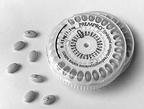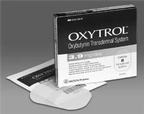New Products
NEW PRODUCTS
Listings are for information only and do not constitute endorsements.
Low-dose Prempro approved

The Food and Drug Administration has approved a new lower dose of Prempro (conjugated estrogens/medroxyprogesterone acetate tablets), the most commonly prescribed brand of hormone therapy. According to its manufacturer, Wyeth Pharmaceuticals (Madison, N.J.), the drug is expected to be available at drugstores early this summer.
Low-dose Prempro, which contains 0.45 mg CE and 1.5 mg MPA, was found to be as effective as the most frequently prescribed strength of Prempro in treating vasomotor symptoms and vaginal atrophy, although it has 28% less estrogen and 40% less progestin. This finding was based on supporting data from the Women's Health, Osteoporosis, Progestin, and Estrogen (HOPE) Study, a multicenter trial of 2,805 healthy postmenopausal women (aged 40 to 65) with a uterus. The trial also found a low incidence of breakthrough bleeding or spotting. The drug is indicated for women with a uterus to treat moderate-to-severe vasomotor symptoms associated with menopause, like hot flashes and night sweats, and also for treating moderate-to-severe symptoms of vulvar and vaginal atrophy. Postmenopausal HT is the only FDA-approved therapy for relieving menopausal symptoms. For more information, visit the manufacturer's Web site, http://www.Wyeth.com .
New name, new upgrade for critical care ob/gyn software
VestiTrak is the new name for Femtrack, a critical care software product initially designed exclusively for ob/gyn practices, but which has now expanded to other specialties. In addition, the company is releasing an upgradeVestiTrak Version 4.0that uses up-to-date industry technology to expedite and simplify health-care tracking and follow-up. According to VestiTrak International (Chicago, Ill.) the system provides physicians with reduced risk of liability and prompt patient follow-up; it also frees up time spent on manual paperwork. Electronic loading of lab results for Pap smears and colposcopies is among the new features. For more information, visit http://www.vestitrak.com .
First patch for overactive bladder

The FDA has given the green light to Oxytrol (oxybutynin transdermal system), the first "patch" therapy to treat overactive bladder (OAB) with symptoms of urge urinary incontinence, urgency, and frequency. According to the manufacturer, Watson Pharmaceuticals (Corona, Calif.), clinical trials involving more than 1,000 women at 50 US centers showed the new mode of delivering a long-used drug to be effective in controlling OAB symptoms over a 3-to 4-day period. Data also showed that Oxytrol was well tolerated, with anticholinergic side effects such as dry mouth and constipation comparable to placebo.
The thin, clear patch should be applied to the abdomen, hip, or buttock twice weekly. It relieves OAB symptoms for up to 4 days by delivering 3.9 mg daily of oxybutynin consistently and continuously through the skin into the bloodstream, bypassing the initial metabolism in the liver and GI tract.
Patients should not use Oxytrol if they have urinary or gastric retention, uncontrolled narrow-angle glaucoma, or hypersensitivity to either oxybutynin or the patch's other components. Expected to be available by prescription in the second quarter of 2003, the product will be marketed in packages of eight (a month's supply). For more information, call 1-888-699-8765 or visit the company Web site at http://www.watsonpharm.com .
New Products. Contemporary Ob/Gyn Apr. 1, 2003;48:125.
Intentional weight loss linked to lower mortality in postmenopausal women
March 11th 2025A recent study shows that intentional weight loss significantly lowers all-cause, cancer, and cardiovascular mortality risks among postmenopausal women, highlighting the importance of targeted weight management.
Read More
